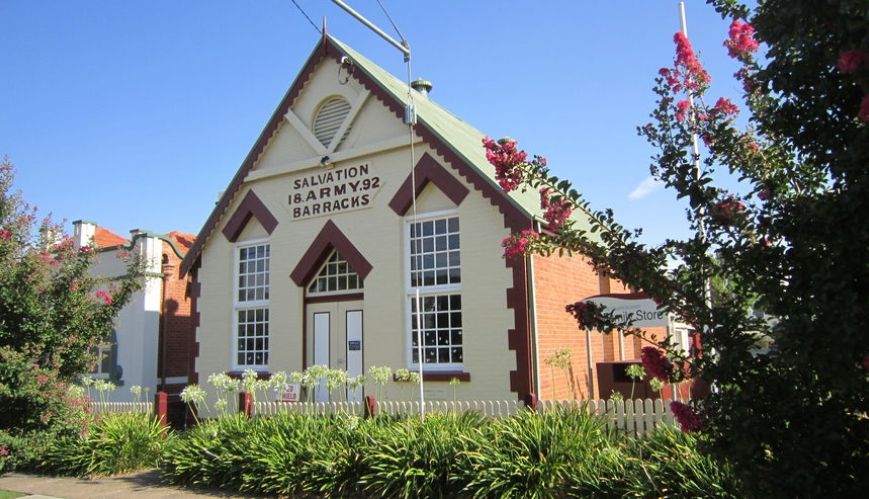Avoiding the 'heritage' trap

Avoiding the 'heritage' trap
3 June 2019
The historic Salvation Army building in June, now used as a Family Store. Photo: Churches Australia.
I was intrigued by a recent radio interview* with Jeremy Salmond, recipient of the 2018 New Zealand Institute of Architects Gold Medal in recognition of an outstanding career in heritage architecture.
Jeremy has worked on virtually every type of historical building in New Zealand, from art galleries to maraes (sacred Maori buildings) and churches.
While acknowledging the strong emotion around what happens to heritage buildings, he sees no contradiction in introducing new buildings into heritage settings “where they replace unsympathetic existing buildings”.
For some people, I suppose these words are tantamount to heresy – the idea that old and new can merge, yet still be thought of as ‘heritage’.
But any building must be able to be used, Jeremy argues. There has to be “a sense of obligation to later generations”.
In fact, in architecture, the whole reason for looking back is to look forward. This turned my thoughts to The Salvation Army’s history, the denomination that has been my home for more than 50 years (excluding a very brief Baptist sojourn in the late 1980s).
In 2015, I was privileged to attend Boundless, The Salvation Army international congress celebrating 150 years since the Army was founded in the poorest parts of London’s East End. I own books dating back to 1889, authored by our movement’s founders.
I follow Facebook pages that highlight historic Salvation Army figures, events and memorabilia. And yet, as I listened to the interview with Jeremy, I could sense the Holy Spirit impressing on me that my fascination with Salvation Army history must always support a focus on ‘legacy’, not ‘heritage’. I mustn’t get so hung up on nostalgia that I neglect God’s newness.
One of the older titles on my many well-stuffed bookshelves is Howard A. Snyder’s New Wineskins: Changing the Man-made Structures of the Church (1977).
Howard, an American, wrote this book after six years of missionary service in Brazil, where being engaged in a church from another culture prompted “a fundamental rethinking of the mission and structure of the Church in today’s world”.
I read this book as a teenager, and one of the passages that struck a chord, even deserving my highlighter pen, was this: “Wineskins are not eternal. As time passes they must be replaced – not because the Gospel changes, because the Gospel itself demands and produces change! New wine must be put into new wineskins – not once-for-all, but repeatedly, periodically.”
Howard concluded with a challenge that I still say “amen” to in 2019: “These are not the days for the Church to turn inward, curl up in a corner and passively await the end.”
The world has yet to see what the Spirit can do through the Church to establish God’s kingdom on Earth. God’s ‘new thing’ may have a greater beginning in human history today [author’s emphasis] than we have thought possible.”
Most churches cobble their future together from bits of old and bits of new, partnering human perspiration with (hopefully!) divine inspiration. And just as beautiful old buildings can evolve, retaining their character yet adapting in everything from finishings to fire protection, so any faith community must always be ready to adapt, replacing what is no longer serving or sympathetic to God’s mission.
Unless a faith community builds well on its pioneering heritage, it can deliver no lasting legacy for the future. Instead, it will stagnate as an outmoded curiosity, a mere historic artefact.
Major Christina Tyson is a New Zealand Salvation Army officer and former editor of War Cry magazine in the New Zealand, Fiji, Tonga and Samoa Territory.